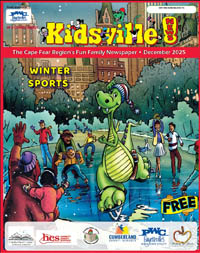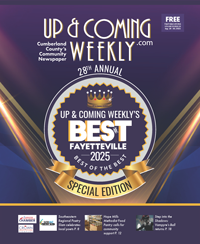The thrill of hunting for buried treasure is an adventure that humans will probably never tire of. Some find it in their local thrift store, others in traveling the world, and still others find it in intellectual pursuits.
Russell James, Park Ranger at Clark Park and Nature Center, found it in the forest. An avid geocacher and letterboxer, James is leading an upcoming program at the park that combines nature with exploration, teaching adults and kids the navigation and puzzle-solving skills necessary to enjoy both geocaching and letterboxing.
“I like having them learn about something they’ve never heard of before,” James said. According to Letterboxing North America, “Letterboxing is an intriguing 'treasure hunt' style outdoor activity. Letterboxers hide small, weatherproof boxes in publicly accessible places (like parks) and post clues to finding the box online on one of several websites. However, clues to finding some of the most highly sought boxes are passed around by word of mouth.”
According to Letterboxing North America, “Letterboxing is an intriguing 'treasure hunt' style outdoor activity. Letterboxers hide small, weatherproof boxes in publicly accessible places (like parks) and post clues to finding the box online on one of several websites. However, clues to finding some of the most highly sought boxes are passed around by word of mouth.”
The site explains that there are 60,000 active letterboxes listed on their website alone.
What’s inside the boxes? Usually, a logbook, a hand-carved rubber stamp, and an ink pad. Finders carry their logbook and stamp, and when they find a letterbox, exchange stamp imprints - leaving an imprint from their stamp in the letterbox logbook and an imprint from the letterbox stamp in their logbook.
Letterboxing primarily depends on written clues. While geocaching shares the concept of hidden, weatherproof, physical containers, they are instead found using a set of coordinates and the contents of the boxes are not limited to stamps.
According to geocacheadventures.org, “geocaching began when selective availability was removed from the Global Positioning System on May 2, 2000, making GPS navigation available for public use. A few days later, geocaching was born by Dave Ulmer, a computer consultant in Oregon, who wanted to test the new accuracy. He hid a container in the woods near his home and posted the coordinates on a website. Within just a few days, the container had been found by two people and the activity of geocaching had been born,” the site explains.
When explaining the main distinctions between how letterboxes and geocaches are found, James says, “It’s kind of like the difference between primitive skills versus technological skills.”
He compares letterboxing to an “old-time, pirate movie” type of experience, while geocaching relies on more advanced skills —either traditional orienteering skills combined with a handheld GPS, or newer options like the Geocaching app.
He personally enjoys introducing people to letterboxing the most. It’s an adventure he’s enjoyed with his own family over the years, a hobby that brings them close to nature.
“We’ve found some unique parks by doing letterboxing,” he shared.
The process of hunting for both letterboxes and geocaches, he believes, can help people increase their observational skills and enjoy their environment more.
“I think finding these new areas, or finding something unique in nature that you don’t quite see all the time, is great,” he shared. “You may walk by something all the time, but you don’t notice it until you’re actually looking for it.”
He enjoys using the event as an opportunity to teach people more about nature, too, by incorporating cues like “look for the shiny magnolia leaf” into his letterboxing clues, which enable attendees to identify a Magnolia leaf whether or not they’ve seen one before.
The event will start with an introduction to both geocaching and letterboxing and then move on to DIY stampmaking. Attendees will learn about designing a stamp and transferring the design to a rubber surface. Next, they’ll carve their design using the appropriate tools so that it’s ready to leave a unique impression in the next logbook they find. A creative himself, James said he was “looking forward to seeing everybody’s creativity.”
After the introduction and stamp making, they’ll hit the trails. James says he has designed the experience to make the letterboxing and geocaching dependent on each other. Geocaches will include clues to find the next letterbox and vice versa. Always looking for ways to make the hunt more engaging, some of the clues will even include queries that participants have to answer correctly before moving on to the next clue.
“I’ve got these worst-case-scenario survival things on there, like how to eat a lizard,” James said of the queries.
The event is introductory level, will not be overly strenuous, and James says it’s suitable for ages 8+.
“I'm hoping to get more beginners,” he said.
Attendance is $5/participant for the event, which will be held Aug. 16, from 11 a.m. to 1 p.m. at Clark Park Nature Center located at 631 Sherman Drive. Learn more at https://www.fayettevillenc.gov/Parks-and-Recreation or their Facebook page at https://www.facebook.com/fcprnature
Hunting for hidden treasure at Clark Nature Center: A geocaching and letterboxing adventure
- Details
- Written by Anna White

 How to resolve AdBlock issue?
How to resolve AdBlock issue? 








